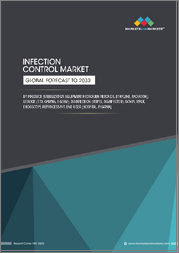
|
시장보고서
상품코드
1617202
UBE(Unilateral Biportal Endoscopy) 시장 예측(-2030년) : 제품별, 용도별, 최종사용자별, 지역별 세계 분석Unilateral Biportal Endoscopy Market Forecasts to 2030 - Global Analysis By Product (Reusable and Single-use), Application (Decompression, Deherniation, Spinal Stabilization and Other Applications), End User and By Geography |
||||||
Stratistics MRC에 따르면, 세계 UBE(Unilateral Biportal Endoscopy) 시장은 2024년 9억 7,716만 달러로 예측 기간 동안 CAGR 8.0%로 성장하여 2030년까지 15억 5,062만 달러에 달할 것으로 예상됩니다.
척추 수술은 UBE(Unilateral Biportal Endoscopy)으로 알려진 정교한 최소침습 수술 기법의 주요 응용 분야입니다. 고해상도 카메라와 수술기구를 신체의 같은 쪽에 있는 두 개의 작은 절개창을 통해 삽입하여 척추 질환을 관찰하고 치료합니다. 개복 수술에 비해 UBE는 조직 손상이 적고, 회복이 빠르며, 근육 박리가 적은 등 많은 장점이 있습니다. 주변 구조물에 대한 손상을 최소화하고 척추에 직접 정확하게 접근할 수 있는 이 기술은 척추 고정술, 추간판 절제술, 감압술과 같은 시술에서 환자에게 기존 기술보다 덜 침습적이고 효율적인 옵션을 제공하기 때문에 점점 더 인기를 얻고 있습니다.
미국 국립보건원(NIH)에 따르면, 양측 양측 내시경과 같은 기술을 포함한 최소침습 척추 수술은 기존 개복 척추 수술에 비해 회복 시간을 최대 50% 단축하고, 수술 후 통증을 30-40% 감소시키며, 입원 기간을 20-30% 단축시키는 것으로 나타났습니다.
높아지는 외래 치료의 필요성
외래 수술은 전 세계 의료 시스템이 비용 절감에 중점을 두면서 점점 더 보편화되고 있습니다. 이 모델은 UBE에 이상적입니다. 최소침습적 기술로 인해 입원 기간과 회복 시간이 단축되어 환자가 더 빨리 일상 활동을 재개할 수 있기 때문입니다. 또한, UBE 수술이 얼마나 효율적이고 비용 효율적이라는 것을 이해하면서 점점 더 많은 보험회사들이 UBE 수술에 대한 보험 적용을 통해 이러한 추세를 지지하고 있습니다. 의료 서비스 제공자들이 수술 비용을 절감하고 입원 시설에 대한 부담을 줄이기 위해 노력함에 따라 외래 수술에서 UBE의 역할은 점점 더 커질 것으로 예상됩니다.
고가의 초기 설비 비용
UBE 시술에 필요한 내시경 도구, 카메라 및 고급 영상 시스템을 구입하고 유지하는 데 드는 비용이 비싸기 때문에 UBE 시술에 필요한 기술과 장비의 고비용은 UBE를 널리 사용하는 데 주요 장애물 중 하나입니다. 또한, 이러한 시스템은 병원이나 클리닉에서 많은 투자를 필요로 하기 때문에 특히 중저소득 지역에서는 엄청난 부담이 될 수 있습니다. 회복 시간 단축 및 입원 기간 단축과 관련된 장기적인 비용 절감 가능성에도 불구하고, 이러한 높은 초기 비용은 일부 의료 서비스 제공자가 UBE를 도입하는 데 방해가 될 수 있습니다.
기술 개발 및 로봇 공학의 통합
UBE와 로봇 보조 기술의 결합은 수술의 제어와 정확성을 향상시킬 수 있는 큰 기회를 제공합니다. 로봇 시스템과 UBE의 결합은 최소침습 수술 중 외과의사의 정확성을 향상시켜 환자 결과를 더욱 개선할 수 있으며, UBE는 AI 및 기계 학습을 적용하여 수술 탐색 및 수술 결과를 개선하는 데 도움이 될 수 있습니다. 또한, 이러한 기술 발전으로 인해 UBE는 복잡한 수술에 대한 선택이 될 수 있으며, 전문 의료 시설에서 UBE가 확대될 것으로 보입니다.
기존의 수술법과의 경쟁
UBE의 사용이 증가하고 있음에도 불구하고, 전통적인 개복 수술 및 기타 최소침습 수술은 여전히 빈번하게 시행되고 있습니다. 수십 년간의 임상 데이터를 통해 안전성과 유효성이 입증되었기 때문에 많은 외과의사들은 이러한 시행착오를 거친 수술이 더 안전하다고 생각합니다. 또한, 의료 서비스 제공자와 병원은 UBE와 같은 새로운 기술에 대한 투자를 꺼리고 있으며, UBE 시장은 이러한 기존 기술에 대한 강한 선호로 인해 심각한 장애물에 직면 할 수 있으며 특정 지역 및 전문 분야에서 채택을 저해 할 수 있습니다.
COVID-19의 영향:
UBE(Unilateral Biportal Endoscopy) 시장은 COVID-19 팬데믹으로 인해 도입과 성장이 둔화되었으며, COVID-19 관련 의료 수요를 우선시하고 병원내 감염 위험을 낮추기 위해 팬데믹 초기에는 UBE를 포함한 선택적 수술이 연기되거나 중단되었습니다. 또한, UBE 장비와 훈련의 활용은 세계 공급망의 혼란과 전염병 관리에 대한 의료 자원의 재분배로 인해 방해가 되었습니다. 그러나 최소침습 수술에서 UBE의 잠재력은 의료 시스템이 조정되고, 특히 수술 후 회복 시간을 단축하고 환자 결과를 개선하려는 시장에서 선택적 수술이 재개됨에 따라 다시 주목을 받고 있습니다.
예측 기간 동안 재사용형 부문이 가장 큰 비중을 차지할 것으로 예상됩니다.
UBE(Unilateral Biportal Endoscopy) 시장은 재사용 가능한 부문이 주도할 것으로 예상됩니다. 효율적인 멸균 및 소독 절차로 인한 높은 회수율로 인해 의료 서비스 제공자들은 재사용 가능한 제품을 광범위하게 채택하고 있으며, 이는 재사용 가능한 제품의 우위를 점하고 있습니다. 재사용 가능한 기구를 감염 위험에 따라 분류하면 효과와 안전성을 향상시키는 맞춤형 소독 기술이 가능해집니다. 또한 최소침습 수술의 확산에 따라 재사용 가능한 부문이 계속해서 시장을 주도할 것으로 예상되지만, 감염 관리에 대한 관심이 높아지고 일회용 제품의 낮은 유지보수 필요성으로 인해 일회용 부문이 급성장할 것으로 예상됩니다.
외래 수술 센터 부문은 예측 기간 동안 가장 높은 CAGR을 보일 것으로 예상됩니다.
외래 수술 센터(ASC) 부문은 UBE(Unilateral Biportal Endoscopy) 시장에서 가장 높은 CAGR로 성장할 것으로 예상됩니다. ASC는 비용 절감, 당일 수술의 용이성 등 환자와 의료 전문가에게 매력적인 장점이 많으며, 최소침습적 수술에 대한 수요 증가에 따라 전문가가 소유하고 운영하는 ASC의 증가가 주요 요인으로 작용할 것으로 예상됩니다. 또한, 유리한 의료비 지불 관행과 입원 기간 단축을 위한 시술에 대한 요구가 증가하면서 외래 진료로의 전환을 촉진하는 요인으로 작용하고 있습니다.
가장 높은 점유율을 차지하는 지역:
북미가 UBE(Unilateral Biportal Endoscopy) 시장을 주도할 것으로 예상됩니다. 비감염성 질환의 높은 유병률, 선진화된 의료 시스템, 최소침습적 수술이 필요한 노인 인구의 증가 등이 이러한 우위의 주요 요인으로 작용하고 있습니다. 특히 미국은 유리한 상환 정책과 첨단 수술 기술에 대한 선호도가 높아지면서 이 시장의 주요 기업으로 부상하고 있습니다. 또한, 북미는 주요 시장 기업의 존재와 지속적인 기술 발전으로 인해 편측 이중 포털 내시경의 혁신과 응용 분야에서 중요한 거점이 되고 있으며, 이는 이 지역의 성장에 큰 기여를 하고 있습니다.
CAGR이 가장 높은 지역:
UBE(Unilateral Biportal Endoscopy) 시장은 아시아태평양에서 가장 높은 CAGR로 성장할 것으로 예상됩니다. 의료 인프라의 급속한 개선, 시장 진입 기업의 투자 증가, 혁신과 신기술 도입을 촉진하는 완화된 규제 프레임워크 등이 이러한 성장을 촉진하는 요인 중 일부입니다. 중국과 인도와 같은 국가들은 의료 전문 지식의 향상과 최소침습 수술에 대한 수요 증가로 인해 이러한 모멘텀을 주도하고 있습니다. 또한, 의료 전문가들이 효과적이고 효율적인 치료법을 찾고 있기 때문에 이 지역에서 특히 노년층에서 척추 질환의 발생률이 증가하고 있는 것도 시장을 주도하고 있습니다.
무료 맞춤형 서비스:
이 보고서를 구독하는 고객은 다음과 같은 무료 맞춤화 옵션 중 하나를 사용할 수 있습니다.
- 기업 개요
- 추가 시장 기업 종합 프로파일링(최대 3개사까지)
- 주요 기업 SWOT 분석(최대 3개사)
- 지역 세분화
- 고객의 관심에 따른 주요 국가별 시장 추정치, 예측, CAGR(주: 타당성 검토에 따른)
- 경쟁사 벤치마킹
- 제품 포트폴리오, 지리적 입지, 전략적 제휴를 기반으로 한 주요 기업 벤치마킹
목차
제1장 주요 요약
제2장 서문
- 개요
- 이해관계자
- 조사 범위
- 조사 방법
- 데이터 마이닝
- 데이터 분석
- 데이터 검증
- 조사 접근법
- 조사 정보 출처
- 1차 조사 정보 출처
- 2차 조사 정보 출처
- 가정
제3장 시장 동향 분석
- 성장 촉진요인
- 성장 억제요인
- 기회
- 위협
- 제품 분석
- 용도 분석
- 최종사용자 분석
- 신흥 시장
- COVID-19의 영향
제4장 Porter's Five Forces 분석
- 공급 기업의 교섭력
- 구매자의 교섭력
- 대체품의 위협
- 신규 참여업체의 위협
- 경쟁 기업 간의 경쟁 관계
제5장 세계의 UBE(Unilateral Biportal Endoscopy) 시장 : 제품별
- 재사용 가능
- 일회용
제6장 세계의 UBE(Unilateral Biportal Endoscopy) 시장 : 용도별
- 감압
- 요추 중심관 협착증
- 퇴행성 요추관 협착증
- 요추 척추 협착증
- 탈장 제거
- 척추 안정화
- 기타 용도
제7장 세계의 UBE(Unilateral Biportal Endoscopy) 시장 : 최종사용자별
- 병원
- 외래 수술 센터
- 전문 클리닉
- 기타 최종사용자
제8장 세계의 UBE(Unilateral Biportal Endoscopy) 시장 : 지역별
- 북미
- 미국
- 캐나다
- 멕시코
- 유럽
- 독일
- 영국
- 이탈리아
- 프랑스
- 스페인
- 기타 유럽
- 아시아태평양
- 일본
- 중국
- 인도
- 호주
- 뉴질랜드
- 한국
- 기타 아시아태평양
- 남미
- 아르헨티나
- 브라질
- 칠레
- 기타 남미
- 중동 및 아프리카
- 사우디아라비아
- 아랍에미리트
- 카타르
- 남아프리카공화국
- 기타 중동 및 아프리카
제9장 주요 발전
- 계약, 파트너십, 협업, 합작투자
- 인수와 합병
- 신제품 발매
- 사업 확대
- 기타 주요 전략
제10장 기업 개요
- Stryker Corporation
- Karl Storz
- Conmed Corporation
- Kinetix Lifesciences
- Richard Wolf
- Jiangsu Bonss Medical Technology Co. Ltd.
- Smith & Nephew
- Maxer Endoscopy GmbH
- Endovision Co. Ltd.
- Joimax GmbH
According to Stratistics MRC, the Global Unilateral Biportal Endoscopy Market is accounted for $977.16 million in 2024 and is expected to reach $1550.62 million by 2030 growing at a CAGR of 8.0% during the forecast period. Spinal surgery is the main application for the sophisticated minimally invasive surgical technique known as unilateral biportal endoscopy (UBE). A high-definition camera and surgical tools are inserted through two tiny incisions on the same side of the body in order to view and treat spinal disorders. Compared to open surgery, UBE has a number of benefits, including less tissue damage, quicker recovery, and less muscle dissection. With the least amount of disturbance to the surrounding structures, the technique enables precise, direct access to the spine, it has grown in popularity for procedures like spinal fusion, discectomy, and decompression because it offers patients a less invasive and more efficient option than traditional techniques.
According to the National Institutes of Health (NIH), minimally invasive spine surgery, including techniques like unilateral biportal endoscopy, has been shown to reduce recovery times by up to 50%, minimize postoperative pain by 30-40%, and decrease hospital stays by 20-30% compared to traditional open spine surgery.
Market Dynamics:
Driver:
Growing Need for Outpatient Treatments
Outpatient surgeries are becoming more and more popular as a result of healthcare systems around the world focusing more on cutting costs. This model is ideal for UBE since its minimally invasive technique results in shorter hospital stays and faster recovery times, enabling patients to resume their regular activities more quickly. Additionally, an increasing number of insurers are supporting this trend by covering UBE procedures because they understand how efficient and cost-effective they are. It is anticipated that UBE's role in outpatient surgery will grow as healthcare providers seek to reduce operating expenses and the strain on inpatient facilities.
Restraint:
Expensive initial equipment costs
The high expense of the required technology and equipment is one of the main obstacles to the broad use of UBE. The cost of purchasing and maintaining the endoscopic tools, cameras, and sophisticated imaging systems needed for UBE procedures is high. Furthermore, these systems require large investments from hospitals and clinics, which can be prohibitive, particularly in areas with low and middle incomes. Despite the possible long-term cost savings associated with quicker recovery times and shorter hospital stays, these high upfront costs may prevent some healthcare providers from implementing UBE.
Opportunity:
Technological developments and robotics integration
The combination of UBE and robotic-assisted technologies offers a significant chance to improve surgical control and precision. Combining robotic systems with UBE could further enhance patient outcomes by giving surgeons more accuracy during minimally invasive procedures. UBE may also be useful in enhancing surgical navigation and results through the application of AI and machine learning. Moreover, UBE may become the method of choice for complex surgeries as a result of these technological advancements, which would propel its expansion in specialty medical facilities.
Threat:
Competition from conventional surgical techniques
Traditional open surgeries and other minimally invasive procedures are still frequently employed despite the increasing use of UBE. Many surgeons continue to feel more at ease using these tried-and-true techniques because they have been proven safe and effective by decades of clinical data. Furthermore, healthcare providers and hospitals are reluctant to invest in newer technologies like UBE because they frequently prioritize tried-and-true, affordable treatments. The market for UBE may face serious obstacles as a result of this ingrained preference for conventional techniques, which could impede its adoption in particular areas or specialties.
Covid-19 Impact:
The market for unilateral biportal endoscopy was greatly impacted by the COVID-19 pandemic, which caused a slowdown in adoption and growth. In order to prioritize COVID-19-related healthcare needs and lower the risk of transmission in hospitals, elective surgeries, including those involving UBE, were delayed or cancelled during the early stages of the pandemic. Additionally, the availability of UBE equipment and training was hindered by the disruption of global supply chains and the redirection of healthcare resources towards pandemic management. UBE's potential for minimally invasive surgery, however, attracted renewed attention as healthcare systems adjusted and elective surgeries resumed, especially in markets seeking to shorten recovery times following surgery and enhance patient outcomes.
The Reusable segment is expected to be the largest during the forecast period
The unilateral bilateral endoscopy market is anticipated to be dominated by the reusable segment. Due in large part to their high recoverability rates through efficient sterilization and disinfection procedures, healthcare providers have adopted reusable products widely, which has led to their dominance. The classification of reusable instruments according to the risks of infection enables customized disinfection techniques that improve efficacy and safety. Furthermore, the market is expected to continue to be led by the reusable segment as minimally invasive surgeries gain popularity, but the single-use segment is expected to grow quickly because of growing concerns about infection control and the lower maintenance needs of single-use products.
The Ambulatory Surgery Centers segment is expected to have the highest CAGR during the forecast period
In the unilateral biportal endoscopy market, the ambulatory surgery centers (ASCs) segment is anticipated to grow at the highest CAGR. The rise in professionally owned and operated ASCs, which meet the growing demand for minimally invasive surgical procedures, is the main driver of this expansion. ASCs have a number of benefits that are appealing to patients and healthcare professionals alike, such as cost savings and the ease of same-day surgeries. Moreover, favourable reimbursement practices and a growing desire for procedures that shorten hospital stays are additional factors supporting the move towards outpatient care.
Region with largest share:
The market for unilateral biportal endoscopy is expected to be dominated by the North American region. The high incidence of non-communicable diseases, the sophisticated healthcare system, and the growing geriatric population that demands minimally invasive surgical procedures are all major contributors to this dominance. Due to its advantageous reimbursement policies and growing preference for cutting-edge surgical techniques, the United States in particular is a major player in this market. Additionally, North America is a key hub for unilateral biportal endoscopy innovations and applications due to the presence of major market players and ongoing technological advancements, which also greatly contribute to the region's growth.
Region with highest CAGR:
The unilateral biportal endoscopy market is anticipated to grow at the highest CAGR in the Asia-Pacific region. Rapid improvements in healthcare infrastructure, rising market player investments, and a laxer regulatory framework that promotes innovation and the uptake of new technologies are some of the factors driving this growth. Because of their growing medical expertise and rising demand for minimally invasive surgical procedures, nations like China and India are driving this momentum. Furthermore, the market is driven by the increasing incidence of spinal disorders, especially among the elderly population in this area, as medical professionals look for effective and efficient treatment alternatives.
Key players in the market
Some of the key players in Unilateral Biportal Endoscopy market include Stryker Corporation, Karl Storz, Conmed Corporation, Kinetix Lifesciences, Richard Wolf, Jiangsu Bonss Medical Technology Co. Ltd., Smith & Nephew, Maxer Endoscopy GmbH, Endovision Co. Ltd. and Joimax GmbH.
Key Developments:
In August 2024, Stryker announced a definitive agreement to acquire care.ai, a privately held company specializing in delivering AI-assisted virtual care workflows, smart room technology and ambient intelligence solutions. The acquisition will strengthen Stryker's growing healthcare IT offering and wirelessly connected medical device portfolio.
In June 2024, Karl Storz Endoscopy-America, a subsidiary of medical technology company Karl Storz Se & Co, has agreed to acquire Asensus Surgical. Under the agreement, KARL STORZ will acquire all outstanding shares of Asensus for $0.35 per share in cash.
In February 2024, Smith+Nephew, the global medical technology company, announces an agreement with NAVBIT to exclusively distribute the NAVBIT SPRINT(TM) in Australia. A single-use, sterile navigation system with everything provided in a small carton, NAVBIT SPRINT(TM) is designed to suit busy surgeons - and its convenient product format makes it extremely practical and cost efficient for hospitals and day surgery environments.
Products Covered:
- Reusable
- Single-use
Applications Covered:
- Decompression
- Deherniation
- Spinal Stabilization
- Other Applications
End Users Covered:
- Hospitals
- Ambulatory Surgery Centers
- Specialty Clinics
- Other End Users
Regions Covered:
- North America
- US
- Canada
- Mexico
- Europe
- Germany
- UK
- Italy
- France
- Spain
- Rest of Europe
- Asia Pacific
- Japan
- China
- India
- Australia
- New Zealand
- South Korea
- Rest of Asia Pacific
- South America
- Argentina
- Brazil
- Chile
- Rest of South America
- Middle East & Africa
- Saudi Arabia
- UAE
- Qatar
- South Africa
- Rest of Middle East & Africa
What our report offers:
- Market share assessments for the regional and country-level segments
- Strategic recommendations for the new entrants
- Covers Market data for the years 2022, 2023, 2024, 2026, and 2030
- Market Trends (Drivers, Constraints, Opportunities, Threats, Challenges, Investment Opportunities, and recommendations)
- Strategic recommendations in key business segments based on the market estimations
- Competitive landscaping mapping the key common trends
- Company profiling with detailed strategies, financials, and recent developments
- Supply chain trends mapping the latest technological advancements
Free Customization Offerings:
All the customers of this report will be entitled to receive one of the following free customization options:
- Company Profiling
- Comprehensive profiling of additional market players (up to 3)
- SWOT Analysis of key players (up to 3)
- Regional Segmentation
- Market estimations, Forecasts and CAGR of any prominent country as per the client's interest (Note: Depends on feasibility check)
- Competitive Benchmarking
- Benchmarking of key players based on product portfolio, geographical presence, and strategic alliances
Table of Contents
1 Executive Summary
2 Preface
- 2.1 Abstract
- 2.2 Stake Holders
- 2.3 Research Scope
- 2.4 Research Methodology
- 2.4.1 Data Mining
- 2.4.2 Data Analysis
- 2.4.3 Data Validation
- 2.4.4 Research Approach
- 2.5 Research Sources
- 2.5.1 Primary Research Sources
- 2.5.2 Secondary Research Sources
- 2.5.3 Assumptions
3 Market Trend Analysis
- 3.1 Introduction
- 3.2 Drivers
- 3.3 Restraints
- 3.4 Opportunities
- 3.5 Threats
- 3.6 Product Analysis
- 3.7 Application Analysis
- 3.8 End User Analysis
- 3.9 Emerging Markets
- 3.10 Impact of Covid-19
4 Porters Five Force Analysis
- 4.1 Bargaining power of suppliers
- 4.2 Bargaining power of buyers
- 4.3 Threat of substitutes
- 4.4 Threat of new entrants
- 4.5 Competitive rivalry
5 Global Unilateral Biportal Endoscopy Market, By Product
- 5.1 Introduction
- 5.2 Reusable
- 5.3 Single-use
6 Global Unilateral Biportal Endoscopy Market, By Application
- 6.1 Introduction
- 6.2 Decompression
- 6.2.1 Lumbar Central Canal Stenosis
- 6.2.2 Degenerative Lumbar Canal Stenosis
- 6.2.3 Lumbar Spinal Stenosis
- 6.3 Deherniation
- 6.4 Spinal Stabilization
- 6.5 Other Applications
7 Global Unilateral Biportal Endoscopy Market, By End User
- 7.1 Introduction
- 7.2 Hospitals
- 7.3 Ambulatory Surgery Centers
- 7.4 Specialty Clinics
- 7.5 Other End Users
8 Global Unilateral Biportal Endoscopy Market, By Geography
- 8.1 Introduction
- 8.2 North America
- 8.2.1 US
- 8.2.2 Canada
- 8.2.3 Mexico
- 8.3 Europe
- 8.3.1 Germany
- 8.3.2 UK
- 8.3.3 Italy
- 8.3.4 France
- 8.3.5 Spain
- 8.3.6 Rest of Europe
- 8.4 Asia Pacific
- 8.4.1 Japan
- 8.4.2 China
- 8.4.3 India
- 8.4.4 Australia
- 8.4.5 New Zealand
- 8.4.6 South Korea
- 8.4.7 Rest of Asia Pacific
- 8.5 South America
- 8.5.1 Argentina
- 8.5.2 Brazil
- 8.5.3 Chile
- 8.5.4 Rest of South America
- 8.6 Middle East & Africa
- 8.6.1 Saudi Arabia
- 8.6.2 UAE
- 8.6.3 Qatar
- 8.6.4 South Africa
- 8.6.5 Rest of Middle East & Africa
9 Key Developments
- 9.1 Agreements, Partnerships, Collaborations and Joint Ventures
- 9.2 Acquisitions & Mergers
- 9.3 New Product Launch
- 9.4 Expansions
- 9.5 Other Key Strategies
10 Company Profiling
- 10.1 Stryker Corporation
- 10.2 Karl Storz
- 10.3 Conmed Corporation
- 10.4 Kinetix Lifesciences
- 10.5 Richard Wolf
- 10.6 Jiangsu Bonss Medical Technology Co. Ltd.
- 10.7 Smith & Nephew
- 10.8 Maxer Endoscopy GmbH
- 10.9 Endovision Co. Ltd.
- 10.10 Joimax GmbH



















